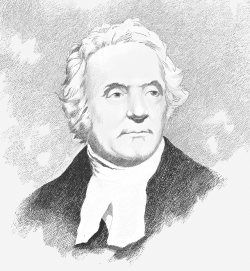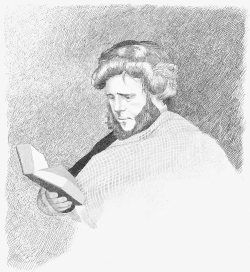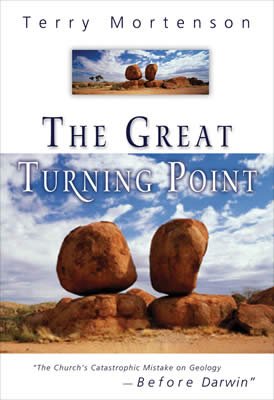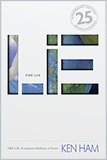
Reinterpretations of Genesis

Thomas Chalmers (1780–1847)
In a sermon to his church in 1804, the gap theory began to be propounded by the young pastor, Reverend Thomas Chalmers (1780–1847), who soon became one of the leading Scottish evangelicals. His views reached a wider audience when in 1814 he wrote a review of Cuvier’s theory.1 This became the most popular old-earth view among Christians for about the next half century. From 1816 onward, Bishop John Bird Sumner, who later became the archbishop of Canterbury, also favored the gap theory.2 The high church Old Testament professor at Oxford, E.B. Pusey, likewise endorsed this interpretation of Genesis 1 in the 1830s.3
The respected Anglican clergyman, George Stanley Faber (1773–1854), began advocating the day-age theory in his Treatise on the Genius and Object of the Patriarchal, the Levitical, and the Christian Dispensations (1823).4 This figurative interpretation of the days of Genesis 1 was not widely accepted by Christians until Hugh Miller (1802–56), the prominent Scottish geologist and evangelical friend of Chalmers, abandoned the gap theory in favor of the day-age theory, shortly before his death by suicide.5

Hugh Miller (1802–1856)
Also in the 1820s, the evangelical Scottish Presbyterian and zoologist, Reverend John Fleming, began arguing for a tranquil Noachian deluge, and in the late 1830s the evangelical Congregationalist theologian, John Pye Smith (1774–1851), advocated a local creation and a local Flood, both of which occurred in Mesopotamia.6
Another approach was taken by the Anglican clergyman and Oxford geometry professor Baden Powell and other liberal Christians. In company with many contemporary continental biblical scholars, they treated Genesis as a myth which conveyed theological and moral truths and which one should not attempt to harmonize with geology at all.7
Nevertheless, many evangelicals and high churchmen still clung to the literal view of Genesis (i.e., a recent creation and global geologically significant Noachian flood) into the early 1840s.
Besides these great changes of thought transpiring in theology and science, there were other upheavals in the 19th century which contributed to a major worldview change in society.
Early 19th Century Theories of Earth History
The Uniformitarian View (e.g., Hutton, Lyell, Fleming)
[B?]———————————————————————[P]————————————[E?]
(B to P: “untold ages”)
The geological phenomena provide no trace of a beginning [B?] or an end [E?] to the world. Although Fleming certainly believed in both a supernatural beginning and supernatural ending, Lyell’s private writings indicate that he probably did not believe in either. During the untold millions of years since the initial creation and leading up to the present [P], the processes of nature such as volcanoes, earthquakes, local floods, wind erosion, rain erosion, deposition in river deltas, coastal sea erosion, etc., have always operated uniformly with the present degree or range of intensity, rate, and geographical extent of effect. Therefore, large-scale geological change is slow, steady, and gradual. The Noachian deluge was seen as geologically insignificant, whether it was local or global.
The Catastrophist View (e.g., Cuvier, Buckland, Sedgwick)
[SB]——[C/C]——[C/C]——[C/C]——[C/C]——[F]———————[P]——[C/C?]——[SE]
(SB to P: “untold ages”)
The universe had a definite supernatural beginning [SB] untold millions of years ago. Initially, God created matter in some primitive form which over the ages organized itself according to the in-built laws of nature. However, from time to time [C/C] a natural regional or global catastrophe (or revolution) has destroyed most or all of life and created huge geological effects, after which God supernaturally intervened to create some new forms of life. During these revolutions, some of the processes of nature operated with vastly greater energy, duration, and geographical extent than at present [P], thereby rapidly producing major geological and geographical changes on the earth. Prior to about 1835, most catastrophists believed the Noachian flood [F] was the last such revolution. Though catastrophists did not, to my knowledge, discuss the future, presumably they believed that other natural revolutions followed by divine supernatural creations might occur again before God would supernaturally bring the world to an end.8
The Scriptural Geologists’ View
[SB]——[F]————————————[P]————[SE]
(SB to P: ca. 6,000 years)
God supernaturally created a mature creation in six days about 4000 B.C. [SB] and then ceased creating.9 During the next approximately 1,600 years before the Noachian flood [F], the laws of nature operated basically as now, though with some different parameters (or initial conditions), which produced some effects different from the present [P], such as a generally global tropical climate, greater plant and animal growth, etc. The unique, year-long, global Noachian flood [F] was initiated and attended by some supernatural acts of God. In other words, along with the extraordinary effects of this divine interruption of the normal course of nature (e.g., simultaneous global rains and volcanic/earthquake activity), the processes of nature produced the same, though greatly magnified, natural effects of modern localized and brief floods, volcanoes, earthquakes, etc., to produce much of the sedimentary rock record and a greatly changed earth surface. As in the beginning, the world will have (at some unknown time in the future) a supernatural ending [SE], when the present laws of nature will be suspended or altered by God as He makes new heavens and a new earth.
The Great Turning Point
Many people in the church today think that “young-earth” creationism is a fairly recent invention, popularized by fundamentalist Christians in the mid-20th century. Is this view correct? Answers in Genesis scholar Dr. Terry Mortenson presents his fascinating original research that documents a different story.
Read Online Buy BookFootnotes
- William Hanna, Memoirs of the Life and Writings of Thomas Chalmers (1849–52), p. I:80-81; Thomas Chalmers, “Remarks on Curvier’s Theory of the Earth,” The Christian Instructor (1814), reprinted in The Works of Thomas Chalmers (1836–42), XII: p. 347–372.
- John Bird Sumner, Treatise on the Records of Creation (1816), II: p. 356.
- See Pusey’s footnotes to William Buckland, Geological and Mineralogical Considerations with Reference to Natural Theology (1836), I: p. 22–25.
- See Volume 1, Chapter 3; also Faber’s articles in the Christian Observer, Vol. XXIII (1823), p. 420–425, 480–487, 551–556, 693–697.
- Hugh Miller, The Two Records: Mosaic and the Geological (1854) and Testimony of the Rocks (1856), p. 107–174.
- John Fleming, “The Geological Deluge as Interpreted by Baron Cuvier and Buckland Inconsistent with Moses and Nature,” Edinburgh Philosophical Journal, vol. XIV (1826), p. 205–239; John Pye Smith, Mosaic Account of Creation and the Deluge Illustrated by Science (1837) and Relation Between the Holy Scriptures and Some Parts of Geological Science (1839).
- In the 1820s, Powell expressed his belief that the historical narrative of Genesis (at least the Noachian flood) had some connection with the findings of geology, but he abandoned this view in the 1830s. See Corsi, Science and Religion, p. 60 and 138.
- The nature of God’s activity (providential or miraculous) in these revolutions and creations was problematic and not clearly explained, though the general consensus seems to have been that the revolutions were part of the course of nature (under divine providence, expressed through the laws of nature), whereas the creations of new forms of life were completely supernatural. Presumably, most catastrophists believed that the Noachian flood was supernaturally induced, but, if so, this is generally unclear from their statements. See, for example, Adam Sedgwick, “Annual General Meeting of the Geological Society, Presidential Address,” Philosophical Magazine, n.s. vol. VII, no. 40 (1830), p. 308; William Smith, Deductions from Established Facts in Geology; Buckland, Vindiciae Geologicae, p. 5, 18–19, 30, and Bridgewater Treatise (1836), I: p. 18–19, 295; Gideon Mantel, Fossils of the South Downs: Geology of Sussex (1822), p. 304–305; William Whewell, The Philosophy of the Inductive Sciences (1840), II: p. 134.
- A couple of scriptural geologists believed that maybe God supernaturally created some plants and animals immediately after the Flood receded.
Recommended Resources

Answers in Genesis is an apologetics ministry, dedicated to helping Christians defend their faith and proclaim the good news of Jesus Christ.
- Customer Service 800.778.3390
- © 2024 Answers in Genesis




